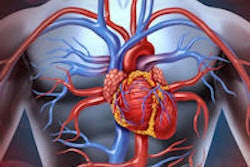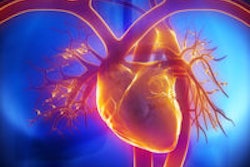
It's worth the extra trouble to perform a triple rule-out CT scan in chest pain patients being evaluated in the emergency department for multiple potential diagnoses, according to a 10-year study from Thomas Jefferson University in Philadelphia.
In one of the largest consecutive triple rule-out series to date, researchers looked at nearly 1,200 patients presenting to the emergency department (ED) with chest pain, for whom multiple diagnoses were being considered. Almost 9% of the triple rule-out diagnoses were noncoronary, and the investigators found 30 problems that would not have been seen with coronary CT angiography (CCTA) alone.
Triple rule-out CT can identify noncoronary diagnoses in acute chest-pain patients, and it is appropriate when there is suspicion for acute coronary syndrome along with other diagnoses such as pulmonary embolism, according to the researchers.
"Even though coronary artery disease was significantly more common in our patients, triple rule-out CT did add value in the identification of significant noncoronary diagnoses that could explain chest pain," said research fellow Dr. Amelia Wnorowski in a presentation at the 2015 RSNA meeting.
Longer scan length, more findings
Triple rule-out CT examines the coronary arteries, the aorta, and the pulmonary arteries in a single scan, and compared with CCTA, it includes anatomic structures above the carina. A double contrast opacification is required, though, to include both right- and left-sided circulations.
The investigators aimed to determine the added value of triple rule-out CT over dedicated CCTA for evaluating chest pain in the ED over nearly 10 years, from 2006 through 2015. The 1,195 patients (mean age, 51 years; 54.6% women) presenting with chest pain were all considered to be at low to intermediate risk of coronary artery disease.
"Our triple rule-out scans extended from 1 to 2 cm above the aortic arch through the base of the heart," Wnorowski said. "We reviewed reports for coronary and noncoronary diagnoses that could explain chest pain."
Patients were classified based on the presence of significant coronary artery disease, defined as greater than 50% stenosis. Noncoronary diagnoses included pulmonary embolism, aortic dissection, and other acute pathologies such as pneumonia, and the group also searched for significant incidental findings.
All studies were performed with electrocardiogram (ECG) gating on an iCT 256-detector-row scanner (Philips Healthcare). The biphasic contrast injection used 60 cm3 of contrast media followed by a 50% saline chaser at 5 cm3 per second.
Most studies negative
"The majority of our studies were negative, without significant disease to explain the acute chest pain," Wnorowski said. In all, 81.4% of studies were negative, and the remaining 18.6% had either a significant coronary or noncoronary diagnosis that could explain acute chest pain.
Significant coronary artery disease was found in 11.7% of the 1,195 patients; most was of moderate severity. In addition, 8.9% of the patients generated a total of 110 noncoronary diagnoses that could explain acute chest pain, significantly fewer than the number with coronary disease. Also, 1.9% of patients had both a coronary and a noncoronary diagnosis.
Pulmonary embolism accounted for the majority of noncoronary diagnoses, at 2.3% or 28 cases, Wnorowski said. Of these, the main pulmonary artery was involved in 28.6%, the lobar branches in another 28.6%, and segmental branches in 42.9%. Among the segmental branches were four cases of upper lobe segmental emboli at the level of the carina -- higher than the reach of a conventional CCTA exam.
There were also two cases of aortic pathology that occurred above the level of the carina: a penetrating ulcer at the level of the distal arch and one dissection. Overall, though, aortic dissection was relatively rare, occurring in only four patients.
The study revealed 418 incidental findings in 35.1% of all patients -- findings not thought to be related to the chest pain. The majority required follow-up imaging, most commonly for lung nodules.
"Our series is, to our knowledge, the largest consecutive series to date to use the triple rule-out, and even though coronary artery disease was significantly more common in our patients, the triple rule-out did add value in the identification of significant noncoronary diagnoses that could explain chest pain," she said.
The researchers noted that up to 30 cases of pulmonary embolism and aortic pathology would have been missed by CCTA due to nonopacified right-side circulation or limited z-axis coverage.
Even if one were to do an extended bolus with coronary CTA, four cases of isolated segmental pulmonary embolism above the carina still would not have been included due to z-axis coverage limitations, Wnorowski said.
Study limitations included the retrospective design, a lack of standardized ordering information for triple rule-out, and a lack of patient characteristics and risk factors for review. Finally, the study design precluded research into patient outcomes, which limits any claims about accuracy and safety of the triple rule-out exam, she said.
"Our experience with close to 1,200 triple rule-out patients in the emergency department suggests that although coronary artery disease was significantly more common in these patients, triple rule-out did add value in identifying the reasons for chest pain, and identified significant noncoronary diagnoses in 8.9% of our population," Wnorowski said. "Triple rule-out also identified patients at risk for acute coronary syndrome and allowed for discharge of a majority of our patients with negative studies."



















